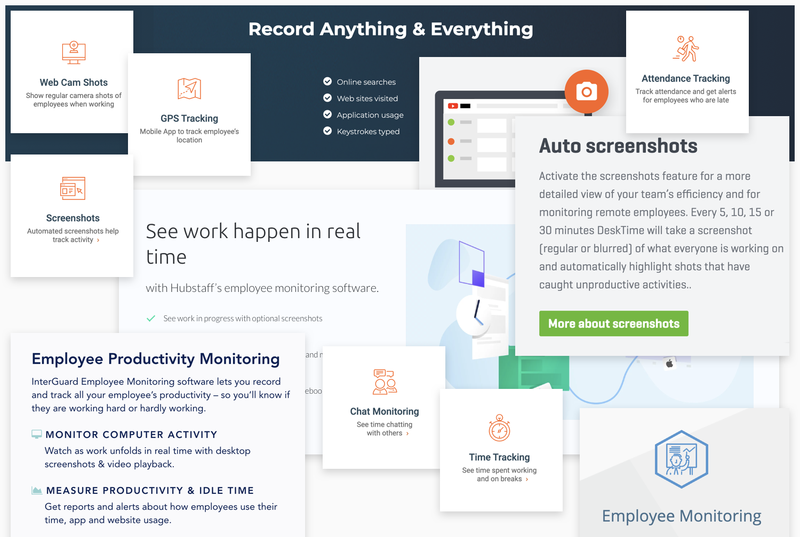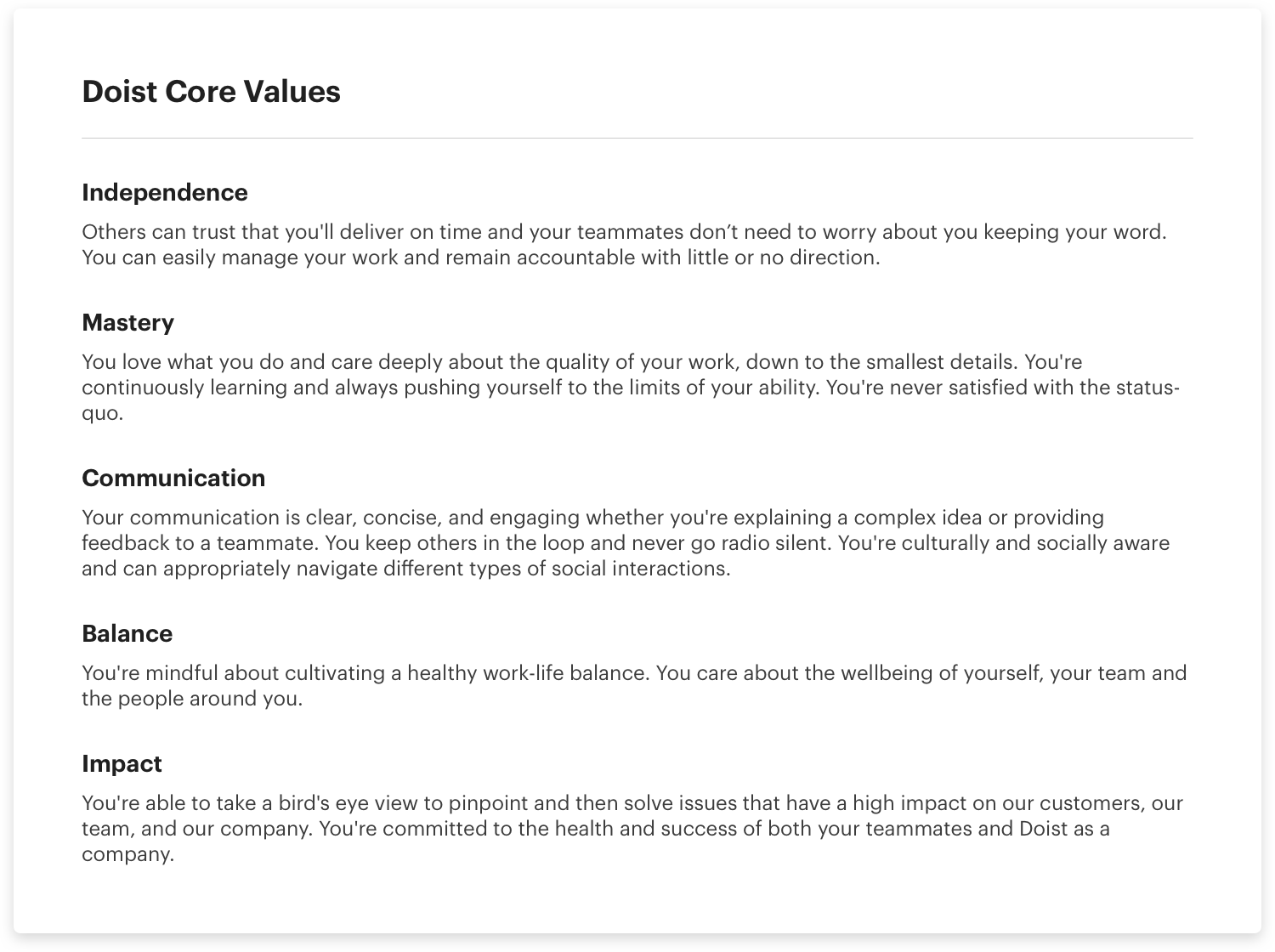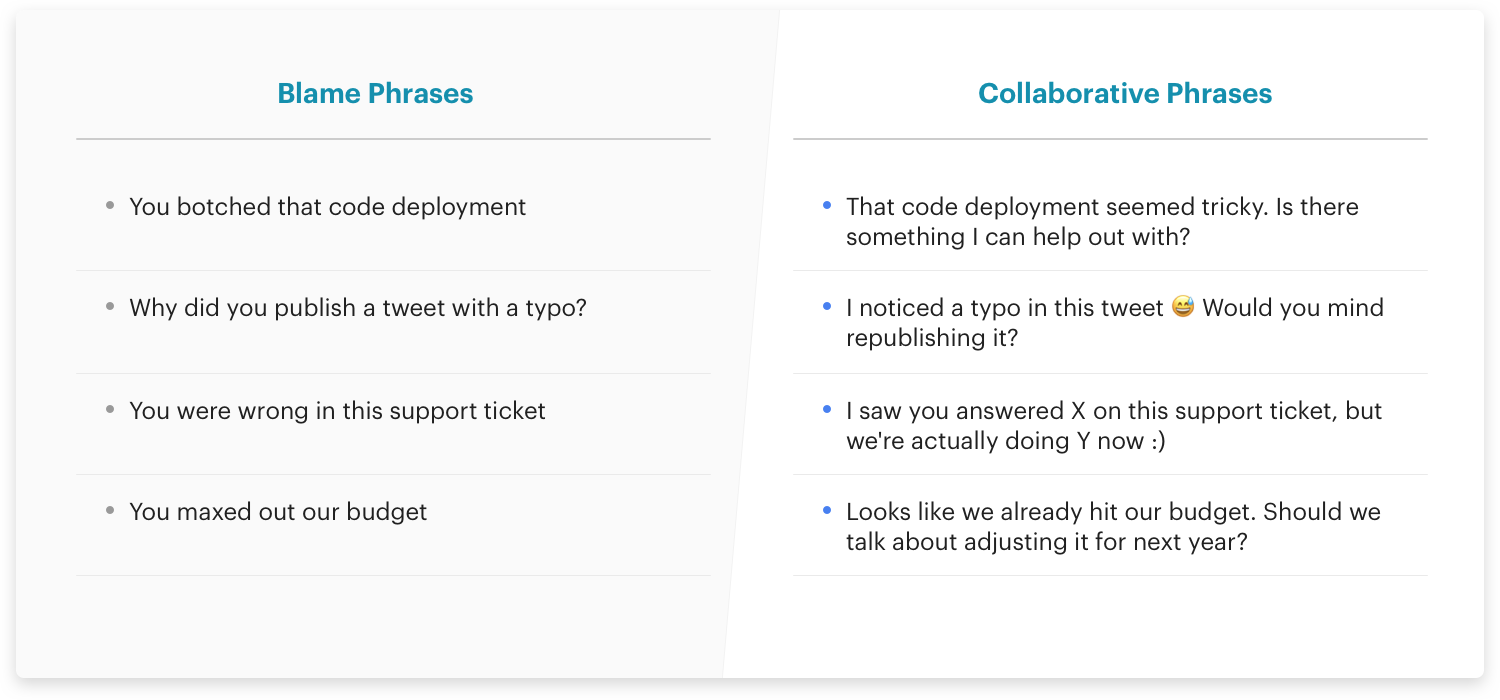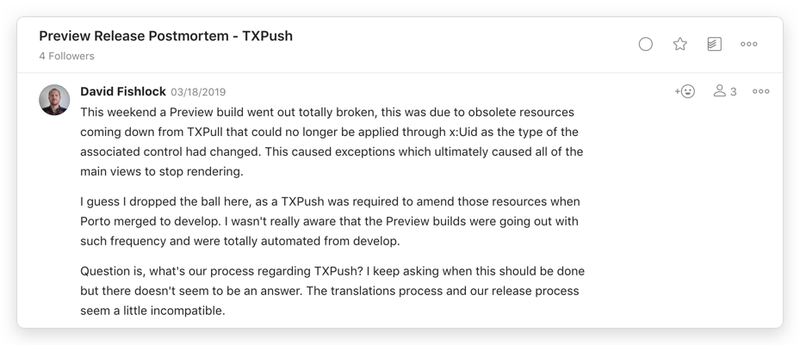If this glittery, floating unicorn in front of me isn’t the purest embodiment of trust, then I don’t know what is, I tell myself as I sit down to write this draft.
For most people, the ability to work remotely is the holy grail of corporate perks. As a working mom, I could not agree more. It’s flexible, doesn’t require the donning of high heels, and, on the occasional sunny Seattle day like today, one may very well indulge in poolside work sessions alongside sparkly inflatable creatures.
The unicorn floats by.
Luxurious as a flexible schedule may seem, it’s no more glamorous than a traditional nine-to-fiver if your workplace’s culture isn’t fully founded upon trust. Tracking tools to monitor even the most mundane of employee behavior are steadily creeping into the remote workforce. Most offer such invasive options as automatically taking screenshots of employees’ computer screens and monitoring who they chat with. Some even grant employers the power to take photos from computer cameras.

But does employee monitoring actually improve productivity? Workplace morale? Team collaboration?
The organization Great Place To Work argues no:
“Regardless of industry, company size, or leadership styles, a high-trust culture is a defining characteristic of every company that wins a coveted spot on the Fortune 100 Best Companies to Work For list that we have produced each year since 1998.”
The business case for building a trust-based company culture is clear. When compared with industry competitors, companies with high-trust cultures experience 50% lower employee turnover, enjoy two to three times higher stock market returns, and earn customer satisfaction ratings that are 2.8 to 3.2 points higher than competitors.
At Doist — a fully remote company of 68 people spread across 26 countries — trust is and always has been our default. Having worked with the company for over seven years, and having run the gamut of positions from freelancer to part-timer to full-timer and now Head of Marketing, I’ve experienced trust and its two-way cultivation from a variety of vantage points — all while living 5,000+ miles away from my coworkers and bosses.
As more and more companies offer the option to work remotely, trust will become increasingly important for managers to understand, embody, and ultimately spread across their workforce. Remote employees too will need to learn to build their trust portfolio in ways that aren’t so outwardly obvious.
Remote work is better with managers who understand the value of trust. We’ve partnered with Remote-How on a survey to understand struggles remote managers around the world are facing daily, and how they are dealing with them. Take the survey
What is a high-trust culture?
Great Place to Work defines a high-trust culture as one in which employees believe that:
- Leaders are credible
- They are treated with respect as people and professionals
- The workplace is fundamentally fair
Doist’s version of a high-trust culture is founded upon our five core values. By embodying those values, leaders and team members learn to exude trust via tangible actions and observable mannerisms.

Leaders must learn to “walk the walk” if they are going to build a thriving, high-trust remote company. But building that kind of organization is impossible if you don’t first begin with meticulous, mindful recruiting.
Recruiting: Catching the first glimpses of trust
As a hiring manager, you become groomed to be on the look-out for specific professional characteristics that indicate whether a candidate would succeed in the technical role at hand. Trust factors may not be top of mind, but, in my experience, there are a few simple ways to identify a trustworthy candidate. While they may seem basic, hiring remotely requires that you rely on some admittedly commonsense signals that are nonetheless easy to overlook:
The candidate is punctual. Simple right? Barring external circumstances, someone who has garnered a first interview should be logged-in on time (or even early to anticipate any troubleshooting!) to the interviewer’s tool of choice. If they’ve been invited to complete a test project, they should complete it within the required deadline. Baby steps 🐣
The candidate is communicative. Remote hiring managers lack many non-verbal cues that on-site interviewers have the luxury to see. Because of this, it’s helpful when a candidate is prompt, clear, and personable when communicating with the hiring committee. It’s easier for seeds of trust to bloom remotely when you get a sense that the person is reliable through the manners in which they communicate online. This includes things like:
- Letting you know that they’ve scheduled an interview in your calendar tool
- Offering engaging conversation during the interview and taking the time to ask the interviewer quality questions about the role and company
- Sending a follow-up email after an interview
- Asking insightful, clarifying questions about a test project
- Passing the mom test, i.e. using basic courtesies like please and thank you
The candidate more or less matches their online profile. While conducting due diligence on the person with whom you’ll have an interview, you’ll inevitably encounter bits and pieces of their online personality. This can be anything from their Github and social accounts, to their blog, previous publications, etc. Ask yourself, does the person I’m seeing online match the person I see on paper? Are the experiences and skills they say they have properly reflected in their test project and interviews? There will be some slight differences, but if the gaps seem significant, it may be a red flag.
The candidate is honest about their shortcomings. Doist’s People Operations Generalist, Andrew Gobran, suggests that candidates can build trust with an interviewer by being honest and open during interviews, even when it requires acknowledging weak points in their skills or knowledge. “Sometimes the drive to land a job can cause people to forget that if their values and skills aren’t truly aligned with the company to which they’re applying, then they probably aren’t going to thrive at the company for long,” he says.
As you prepare your hiring pipeline, never forget that trust is always a two-way street. In Andrew’s experience, screening for trustworthy hires for your remote company must first be preceded by extending trust to the candidates themselves:
“At Doist, we’re intentional about being transparent throughout the hiring process, as well as when we communicate feedback regarding a test project. We also don’t shy away when asked questions by candidates that may require us to reveal things about remote work or the company that challenge us. This often opens the door to more honest conversations with candidates and allows us to see how they react and respond.”
Curating a list of trustworthy candidates is the essential first step to cultivating a culture based on trust. It could be said, though, that the next step in your team members’ journey is even more mission-critical.
Onboarding: Building trust from the start
As a new employee, being remotely onboarded to a new team is seriously anxiety-inducing. Not only do you have to attempt to grasp the personalities of your new team members (and do it virtually), you have to get caught up to speed on how things work, your first projects, existing projects, new tools, workflows, etc.
That’s why the most important lesson you can imbue in a new team member is that trust is assumed, not earned (I elaborate on this idea in my previous post about how to manage a remote team).
During this critical phase, there are some gestures that you as a manager can make to help ensure that the new person feels trusted from day one:
- Simply, be available. New employees will have a lot of questions. Be mindful about setting aside time to support them as frequently as needed. At Doist our default communication style is asynchronous, but during the first few weeks of a new team member’s onboarding, it’s important to be available in real time (as much as time zones permit). Check in with your new employee via DMs regularly and encourage your other direct reports to do the same.
- Communicate honestly and frequently. Let a team member know immediately if key details are missing from their work. Get them accustomed to regular, open feedback so they can develop a sense of confidence that will then allow them to share their feedback candidly too. “During my onboarding period, my manager and teammates were always available to review my work and offered constructive criticism that allowed me to grow and fine-tune areas that I was less knowledgeable in,” recalls Ben Breckler, a Product Designer who joined Doist in January 2019.
- Assign meaningful work. Make clear to new members that you trust them by giving them work that is engaging and has a meaningful impact on the company. “In my first days at Doist, I began working on real projects and fixing real product issues,” says Seva Zaikov a Software Developer who, like Ben, joined our team in January 2019. “From day one, it was assumed that I could deploy code, so I was always treated and trusted the same as all my teammates.”
- Clearly define expectations from day one. New employees might be initially unsure of themselves and what’s expected of them during their first weeks and months. Let them know that it’s ok to make mistakes and that things may take longer while they’re learning. Managers can ease fears and foster trust by establishing clear goals and realistic timelines, and by reassuring newcomers that it’s ok to try, fail, and start over.
- Encourage IRL activity. The more people get to know each other, the less daunting it is to trust others outside of your immediate team. That’s why new Doist hires partake in informal “hangouts” on Zoom so that they can meet others who’ve also recently joined the company. In addition, each new hire is assigned a mentor who they visit on-site, in-person for a period of about a week.
“Working side-by-side with my mentor allowed me to learn quickly without feeling overwhelmed. Getting to know her face-to-face also helped break the ice. When I got home, I felt more comfortable approaching her with all the questions that I had,” says Caroline Florian, who works on Doist’s Support team and traveled from Brazil to Canada for her mentorship trip.

As new hires blossom in their roles and become more comfortable with your remote company’s culture, it’s your job as their manager to ensure that trust-based personal relationships and teamwork continue to thrive.
Ongoing work: Encouraging trust through autonomy
When promoted to a managerial role as head of Doist’s front-end engineers, Henning Muszynski was tasked with developing trust in an entirely new way, with teammates around the globe who’d previously been his peers. To do this, he became a (well-intentioned) broken record.
“I’ve found that repeating yourself can really help bring a point across. For example, I always tell people that when they have issues they can ping me (the remote equivalent of an open door 😉). People didn’t reach out too often in the beginning, but nowadays I feel like the team trusts me to help troubleshoot certain problems with them,” he says.
While you should unequivocally have your team’s back, you must ensure that they’re able to work autonomously if you want to continue developing trust. Micromanagement has absolutely no place in a remote company (or any company for that matter).
How micromanagement destroys trust
In a recent podcast interview, I was asked if I had ever tracked a coworker to see how much time he/she spends online. While doing research for this post, I was disheartened to learn that these types of tools do indeed exist.
The only factors that should matter to me as a team lead are performance and communication.
In a remote culture based on trust, the data churned out by these tools is, frankly, useless. If one of my direct reports is excelling in their work and keeping properly abreast of and engaged in the team’s communication, what value is “time spent online” going to provide me as a manager? The only factors that should matter to me as a team lead are performance and communication.
This is because communication breeds trust, and trust allows for increased responsibility.
“It’s like an echo,” says Doist’s Head of iOS, Nuno Baladia. “If you feel trusted, you feel more responsible, and if you are responsible, you earn more trust. It’s simple.”
Giving employees free range to work autonomously might not come naturally to managers who work remotely. Avoid the urge to micromanage or track people by taking time to deeply introspect. Start by asking yourself the following questions:
- What excuses am I making to justify micromanaging this person? For example: “it will be faster if I do it myself” or “the stakes are too high for me to delegate this.”
- What is preventing me from seeing the bigger picture? As a manager, you need to take a macro instead of a micro approach in order to make important decisions. Getting bogged down in the details can slow you down and/or cloud your judgement.
- What is the current status of the employee’s work in question? Are they communicative about their work? Have they given me any tangible reasons to doubt their abilities or trustworthiness in the past?
- What’s my impetus for wanting this person to be online? You may not have an explicit employee tracker software, but when your team members feel the need to be demonstrably online and respond immediately in order to prove they’re “at work”, that, my friends, is just another form of tracking. Do your best to develop an async culture that allows employees to set their own schedules and places an emphasis on performance over presence.
- Do I genuinely believe this employee would be empowered by tracking? By providing employees a quantitative glimpse into how they spend their time, some time tracking tools like Toggl do in fact have a legitimate place in the workspace. By learning one’s personal productivity patterns, people can adjust their schedules to best suit their goals and needs. The major caveat here is that this form of tracking only serves to breed trust when the manager and employee decide to do it collaboratively. Tracking should be used as an ultimate last resort.
Finally, in my opinion, the most important question to ask yourself: Is this a trust issue, or a control issue? You may find that your tendency to micromanage stems from the inability to cede control and blindly delegate. This is understandable in a remote environment. Personally, I’ve worn many hats at Doist and as the company started to grow, my role began to shift from strictly individual contributor to a team leader. This is when I found myself giving away many of my favorite Legos (a metaphor for delegating responsibilities to new team members as a company begins to scale).
I’ll admit, this was hard! It took me well over a year to recognize all the stories I was telling myself to keep control of one particular Lego. In the end, I let go and, in doing so, discovered that my teammate executed this type of project far better than I ever had. Which makes sense: that’s specifically what I had hired him for 🙃
Don’t blame
Giving away your Legos means that things will be done differently than you would have done them. Feeling comfortable with that change can take some time. Unless your teammate is doing something objectively wrong, avoid the urge to meddle. And at all costs, do not blame or shame the person in question if things go awry.
In the event that there is a mishap, take the opportunity to troubleshoot, learn, and build trust by collaborating transparently on a solution with the teammate in question (and your team as a whole).
“One of my first big code deployments went slightly wrong,” recalls Seva. “I ended up finding the issue, rolling it back, and deploying it properly. When this happened, nobody blamed me for making an error. Instead, as a team we productively and objectively discussed what could have been improved and shared a postmortem on Twist to minimize the possibility of it happening again.”

Transparency
When done inquisitively and in the spirit of collaboration, discussing failure is a large investment in your company’s bank of trust. For remote teams, especially, this is important for two main reasons:
- Transparency breeds creativity and autonomy. Remotely, you won’t always be online at the same time as your direct reports. This shouldn’t stop them from taking chances or making decisions. When your team knows it’s okay to make a mistake, they will have more creative and innovative liberty. Reduce the “scariness” and stigma of errors by talking about them productively and publicly whenever appropriate. With autonomous creative freedom comes accountability and with accountability comes trust.
- Transparency builds knowledge. As we saw in Seva’s case, the team put their heads together to find ways to eliminate the occurrence of a particular error. They documented the result which will remain permanently housed, easily searchable, and fully preserved in its original context in a Twist thread for future team members to read. Documenting, discussing, and publicly sharing the outcome of a failure of any size is the hallmark of transparency which, in turn, forms the foundation of a trust-based culture.
True transparency can only happen if everyone from the company has complete (or nearly complete) access to an organized team knowledge base. Not only does Twist give employees at Doist access to the information they need to do their jobs, but everyone can see almost all of the discussions happening across the company, including a fully public Heads channel where team leads discuss things like career paths, corporate perks and communication issues.

In Twist, new employees can go back and read about why we made particular decisions and review postmortem threads that talk openly about mistakes. Everyone at the company is trusted with all of this information. There is little to no asymmetry.
Transparency is central to the way we work at Doist. We know from experience that we can build a better company and better products faster if we don’t discuss things in isolation. For example, of the 100 or so Twist channels that we have, only a small handful are completely private. As a remote company this level of transparency is paramount, but we believe that all teams can benefit from democratic, transparent, and inclusive conversations.
—excerpt from Designing Twist: The Challenge of Making Teamwork Less Stressful
As a manager of a remote team, you can continue to build trust with your team by being transparent with them about:
- Your own feelings and well-being. When you initiate candid conversations as a manager, it opens up a safe space for your teammates to do the same. Then, rather than bottling up their emotions or concerns, they can feel comfortable approaching you with the same vulnerability that you exhibited towards them. Do an emotional check-in regularly in your 1:1 video meetings. A good way to approach this is to ask the person if they are red (highly stressed), yellow (okay), or green (great) – and reciprocate by talking about your color status too.
- “The state of the union.” In the absence of things like company-wide standups and town halls, it’s your responsibility as a manager to keep abreast of what’s going on and to share that knowledge with the rest of your team. This way, you become a trusted beacon of both high-level and day-to-day information. In Twist you can do this by perusing public channels and threads. Assign yourself some dedicated “lurking time” each week.
- Your expectations. This seems obvious, right? But, alas, some things are easier said than done — especially when working remotely. If your teammates don’t know what is explicitly expected of them, they will be less capable of doing their jobs. Set clear, well-documented goals for each project. We do this in our product specs (here’s a pre-filled template) from the get-go, and check in regularly to see how we can support or unblock our teammates.
- Your faith in the person. Dani García, Doist’s Localization Manager, oversees nearly 20 freelance, remote translators. It’s one of Doist’s most complex roles and, in Dani’s experience, empowerment has been far more effective than micromanagement.
“When new translators are hired, I let them know that we default to trust and, as such, that they will be fully accountable for their language. I always tell them ‘you’re the owner of this language at Doist.’ Empowering statements like these make them feel responsible, valued, and motivated to do their very best work.”
Establishing clear expectations and working together with your team to reach them is one of the most gratifying parts of management. The not so rosy part? Having to figure out which route to take when those expectations are disregarded and disrespected.
What to do when trust is broken
In the last couple of years, our society has become accustomed to wildly egregious trust-breakers like the Cambridge Analytica scandal and the Equifax data incident. Anyone with 30 seconds and an inkling of creativity can conjure up a plotline of a Hollywood-esque trust breach. But in our experience at Doist, trust breaches are far less sensational.
In fact, they tend to have one thing in common: communication.
With the freedom that remote work affords comes a responsibility to proactively communicate. Failure to respond to Twist threads and messages in a reasonable time frame begins simply as a teeny tiny red flag, but as the communicational neglect persists, the red flag balloons.
“There could be many reasons for sudden absenteeism, but there is rarely a valid excuse to not notify your manager before or after,” says Allan Christensen, Doist’s COO. Throughout the years that Allan has managed a remote team, he always takes the same steps when approaching a breach of trust.
- Conducting a wellness check while giving the benefit of the doubt. “I try to handle these situations with care because there is likely a legitimate reason for what’s going on. That’s why I first check-in to see if the person is simply okay. I may or may not get an explanation, but either is fine as long as I know the person is well. I never pry into the details if it just happened once. I trust they had their reasons, and I respect their privacy,” he says.
- Schedule an empathy-based call. Build rapport and a shared sense of empathy with the team member who has breached your trust by reaching out to them IRL. As a manager, I want to know if there are tough external circumstances that my direct reports are facing. Their well-being is my number 1 priority and, by having an open and honest conversation, we can devise a plan together in order to avert these types of situations in the future.
- Encourage more proactivity. Take the time to remind this person that, as part of your remote team, communication is a must and that radio silence is unacceptable. If someone is going to miss a deadline for whatever reason, it’s much better to alert people as soon as possible rather than after the fact, or worse, not at all. No one at Doist has ever been let go for missing a deadline, but failing to communicate about it isn’t ok. Encourage your teammate to communicate consistently by demonstrating the desired behavior. Check up on their well-being frequently, and offer to speak in person as much as is necessary.
“In the vast majority of trust-breach cases at Doist, a sincere, two-way dialog has solved the problem. Nevertheless, in the very few cases where multiple attempts to improve the situation have failed, we’ve unfortunately had no other options but to part ways,” adds Allan. In those cases, termination should never come as a surprise to the employee.
When managers feel the need to track their employees, it implies an adversarial relationship between them and the company. It says that employees are inherently lazy and don’t want to work and that they’ll take advantage of the flexibility to do as little as possible.
If that’s really the case in your workplace, you’ve got a lot bigger problems at your company than how your employees spend their days. In my experience, and according to research, people crave trust and the autonomy that comes with it, and they want the opportunity to take ownership of their work and make a meaningful contribution to the company. When given the chance, they rise to the occasion more often than not.
Building a company culture that assumes your team can’t be trusted is like playing basketball with one hand tied behind your back: you might be able to do it, but you’re never going to reach your full potential. The companies that empower their workers are going to win over companies who monitor them. The future of work is trust, not tracking.

